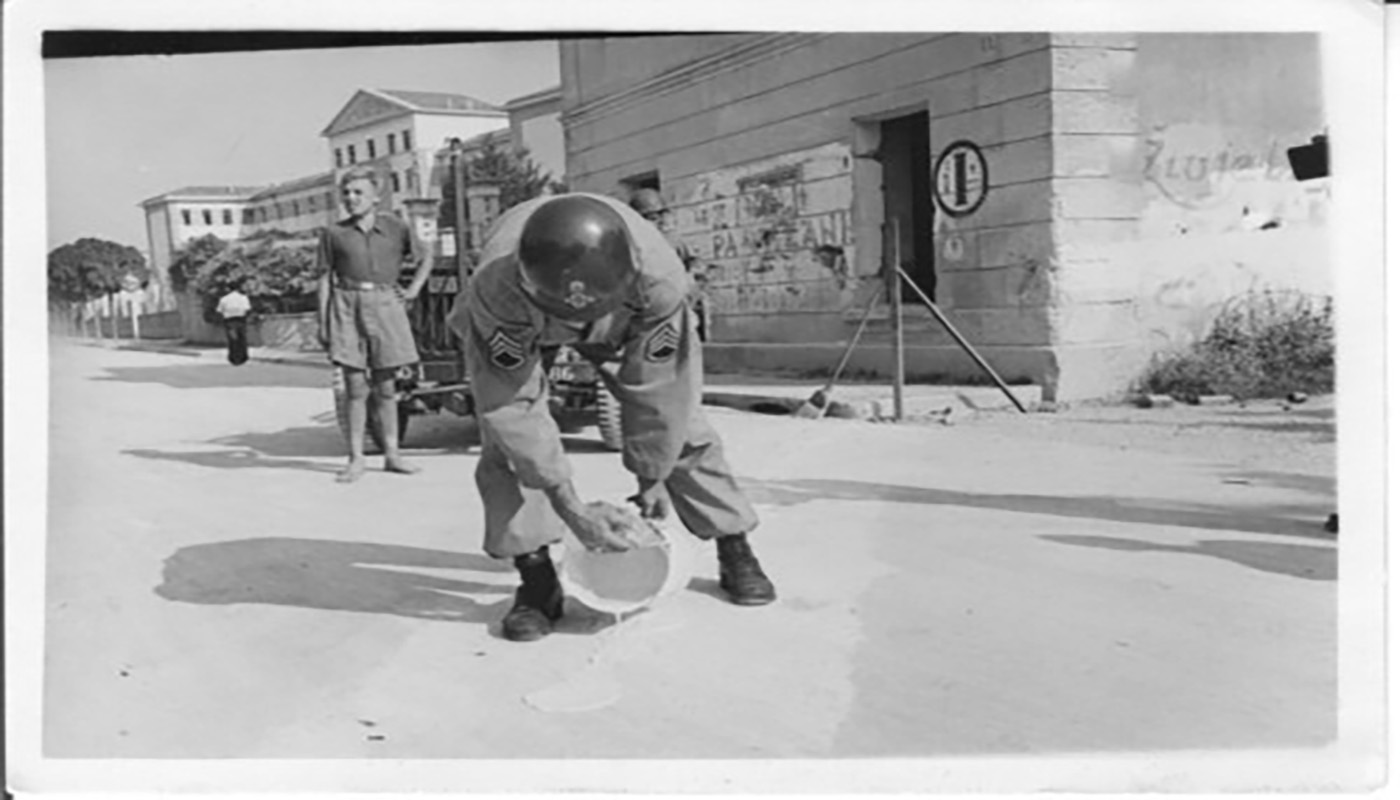
AT THE BORDER
by MIRT KOMEL
China Mieville, in her novel “The City and the City”, imagined twin cities, Besźel “of Eastern Europe” and UI Qoma “of the Middle East”, actually two twin cities, but separated by a border that functions as a kind of confused veil – an “iron curtain”, if you will – guarded by the secret police organization called Breach. The main feature of this boundary is that the inhabitants of both cities are accustomed from youth to “not see” each other’s other city and its inhabitants, since everything they see is virtually erased from their field of vision.
Well, this is, at least in my opinion, exactly the situation in which we both lived in Gorizia not only before the fall of the “iron curtain” that separated Western Europe from Eastern Europe and therefore, ideologically, capitalism from communism, but also later and even today, when the inhabitants of the two cities seem to be used to “not seeing” each other’s cities and their inhabitants, mentally erasing them, just like the inhabitants of the dystopian novel “The City and the City”.
Marcel Štefančič jr., in his book “Slovenski sen”, in the article entitled “The most open border”, wrote that if we want to understand how this ultimate border, the “Iron Curtain”, arose, we must “remember the Italian film ‘Hearts without borders’ directed by Luigi Zampa in 1950. Churchill uttered the phrase ‘Iron Curtain’ in 1946 on one side of the world, the following year, in 1947, in an idyllic karst village on the Italian-Yugoslav border, where everyone lived in harmony and brotherhood, the Allies, the victors of the Second World War, drew a white line through the village. That’s all. That’s all you need. You draw a white line. So little separates communism from capitalism and capitalism from communism.”
A few years ago, during the pandemic, when the border was closed again, Italian artist Salvatore Cali, a guest at Carinarnica, came up with a performance in which he spread Italian flour on the road from the Italian side of the border and Slovenian flour from the Slovenian side, then filmed how cars and cyclists distributed flour from both sides so that it mixed together. Well, I think this is the real approach to blurring the line drawn with chalk, erasing the divisions.
Hegel developed a philosophy of identity in many of his works, which I think is still relevant, especially for this reflection. The traditional philosophy of identity operates by affirming the simple formula “I=I” and implicitly accepts that “I am not the other” – the Hegelian philosophy of identity subverts things by asserting that identity, by which “I” distinguishes itself from the external “other”, already implies an internal distinction, an internal limit that “I” places within itself.
Isn’t this our situation? We are looking for what unites us, but we do not see that we have created the difference within what was once a common, multicultural and multi-ethnic space, such as the one offered to us by the ancient Austria-Hungary, where Gorizia was already unified and different ethnic groups coexisted. What we seek has long since been lost, just like Lacan’s object a or the object-reason-desire: what we pursue as the object of desire is something that has already been lost for a long time.
And what is the Hegelian solution to the problem of identity? The infinite judgment, which affirms that identity is actually the identity of “identity and non-identity”, unity in diversity.
To conclude, back to the beginning: Inspector Tyador Borlú, protagonist of the novel “The City and the City”, must cross the fictional border between the fictional cities to investigate the murder of Mihalia Geary, and the investigation leads him to a legend about Orciny, a third utopian city that is said to exist between the two dystopias, and which turns out to be under the control of the secret police organization called Breach, who watches over offenders.
What we need, in short, is not some utopia of a “third city”, but the Hegelian identity of “identity and non-identity”, the unity in diversity that would allow us to “not see the non-see”, to “forget the forget”, overcoming the still existing, even if rusty “iron curtain”, so that the line drawn with chalk can become flour, which will mix easily, not through some mental leap, but through practice, simply crossing the boundary in practice.
